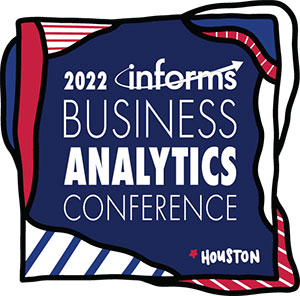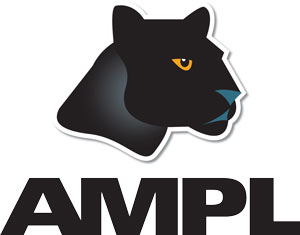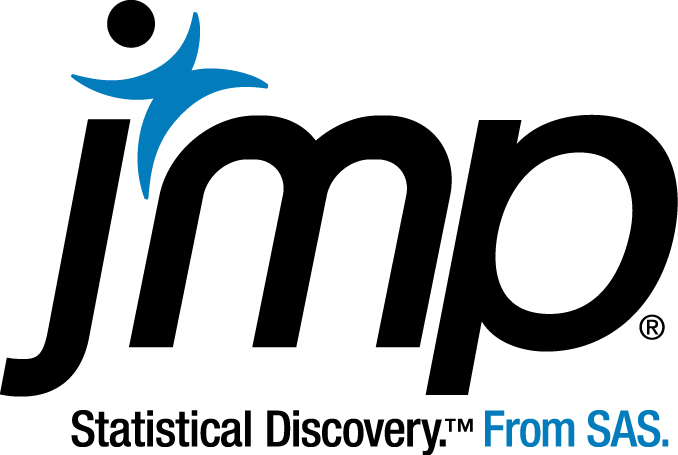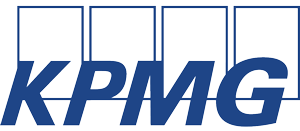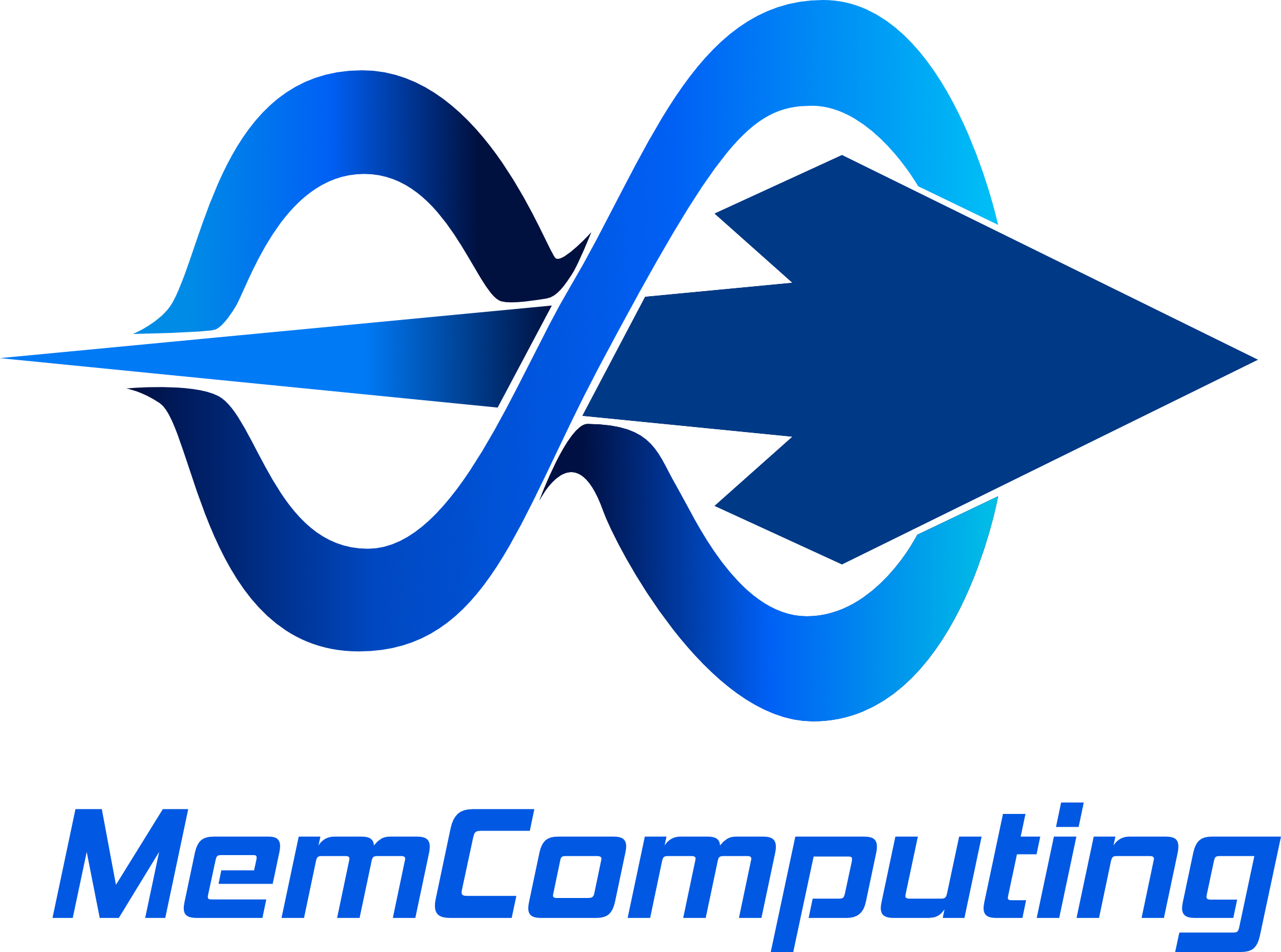Join the conference exhibitors as they discuss innovations and best practices in the field.
Descriptions and times below:
AIMMS
Supply Chain Network Design with Scenario Modeling and Center of Gravity
Monday, April 4, 1:50-2:40pm, Room Sugarland A
Presented by: Linlin Ma & N.S. Krishnan
Systematically solve strategic supply chain problems using AIMMS Network Design. You will learn how to run multiple scenarios to expose hidden opportunities and risks in your network. You will also understand how to optimize its flows, resource capacities, locations, and overall supply chain footprint. On top of that, you will learn to use Center of Gravity analyses to provide new candidate DC locations based on existing demand and supply.
AMPL
Optimization in Your Toolchain: How AMPL is Making it Faster and Easier
Tuesday, April 5, 9:10-10am, Room Sugarland A
Presented by: Robert Fourer
Optimization has been fundamental to Analytics for as long as there have been computers, yet we are still finding ways to make optimization software more natural to use, faster to run, and easier to integrate with enterprise systems. In this presentation, you’ll learn how AMPL’s modeling framework has been enhanced to support optimization in today’s challenging applications. Topics include:
- Expressing constraint logic more directly and understandably.
- Exchanging data and results directly and efficiently with spreadsheets and database systems.
- Interfacing to business systems through APIs for popular programming languages.
- Deploying optimization in cloud environments and containers.
To round out the presentation, the theme of adding optimization to applications will be illustrated by several varied case studies.
DecisionBrain
DB Gene: A Platform to Build Workforce and Manufacturing Optimization Solutions
Monday, April 4, 11:30am-12:20pm, Room Tanglewood
Presented by: Issam Mazhoud
In this presentation, we will show with two case studies how the same platform can be customized to two different business problems. The first is about a workforce solution that optimizes tactical planning and operational scheduling. The second talks about a manufacturing solution that optimizes production planning and scheduling.
DB Gene is based on state-of-the-art technologies and made of standard components. It provides out-of-the-box web user interface components, data and scenario management services, user access and profiling components, and a tasks server that can manage several computation processes in parallel, on-premise, or in the Cloud.
FICO
End-to-End FICO® Xpress Insight Tutorial: From Data to Decisions for Non-Technical Business Users
Tuesday, April 5, 1:50-2:40pm, Room Tanglewood
Presented by: Majid Bazrafshan
You have a team with a great analytics background. They’ve developed advanced analytical tools using Python, R, or your current optimization solver. They’ve derived crucial insights from your data and figured out how your decisions shape your customers’ behaviors. Now it’s time to put these critical analytical insights into the hands of your non-technical business users.
In this tutorial, you’ll learn how FICO’s Xpress Optimization solutions (including Xpress Mosel, Xpress Workbench, Xpress Solver and Xpress Insight) make it possible to embed your analytic models in business user-friendly applications. See how to supercharge your analytic models with simulation, optimization, reporting, what-if analysis, and agile extensibility for your ever-changing business. Plus, you’ll discover how to use the new View Designer to reduce GUI development times from minutes to seconds.
GAMS
Model Deployment and Data Wrangling with GAMS Engine and GAMS Transfer
Tuesday, April 5, 10:30-11:20am, Sugarland A
Presented by: Adam Christensen & Stefan Mann
The right tools help you deploy your GAMS model and maximize the impact of your decision support application.
GAMS Engine is a powerful tool for solving GAMS models, either on-prem or in the cloud. Engine acts as a broker between applications or users with GAMS models to solve and the computational resources used for this task. Central to Engine is a modern REST API that provides an interface to a scalable, containerized system of services, providing API, database, queue, and a configurable number of GAMS workers. GAMS Engine is available as a standalone application, or as a Software-As-A-Service solution running on AWS.
GAMS Transfer is an API (available in Python, Matlab, and soon R) that makes moving data between GAMS and your computational environment fast and easy. By leveraging open source data science tools such as Pandas/Numpy, GAMS Transfer is able to take advantage of a suite of useful (and platform independent) I/O tools to deposit data into GDX or withdraw GDX results to a number of data endpoints (i.e., visualizations,
databases, etc.).
In this session we will go through the necessary steps to get started with GAMS Engine
and GAMS Transfer.
Gurobi Optimization
Learn about Gurobi’s Educational Resources & Play our Optimization Game
Monday, April 4, 1:50-2:40pm, Room Tanglewood
Presented by: Alison Cozad, Optimization Engineer, Cara Touretzky, Technical Account Manager, and Lindsay Montanari, Academic Program Director
Gurobi is a company that has education at the core of what we do; because of this, we strive to find ways to give back to the optimization community that has helped shape us. Gurobi Optimization has developed and released open education tools to teach users why optimization is valuable, why it’s difficult, and why solvers and other optimization algorithms are essential in finding the best solution for their problem solving.
If you are looking to help teach your colleagues optimization or are new to optimization yourself, join Gurobi experts to dive into our new optimization game and take a tour of our suite of free education tools.
Please bring your laptops to get the full benefit of this hands-on tutorial (including game play and a review of available guides).
JMP Statistical Discovery
Adding Sentiment Analysis to the Curriculum of Introductory Analytics Courses
Tuesday, April 5, 11:30am-12:20pm, Room Sugarland A
Presented by: Kevin Potcner
JMP Pro Statistical software has made analyzing unstructured text data simple and engaging. Requiring no prior experience in the concepts of formal statistical analyses (confidence intervals, p-values, models, etc.), extracting meaning from a large collection of text can now be done by even students brand new to the world of analytics.
And with today’s students being intimately familiar with these type of data, the value of such analyses is easily appreciated by any student. Using JMP Pro statistical software, the presenter will illustrate the process of analyzing text data including Sentiment Analysis – the process of quantifying the amount of positive/negative meaning.
KPMG
Talking with Machines: Creating Value from Unstructured Data with AI
Tuesday, April 5, 1:50-2:40pm, Room Sugarland A
Presented by: Rachel Wagner-Kaiser
More than 70% of companies’ data is created and locked away as unstructured data. Emails, images, documents, conversations are rich with valuable information, but difficult for most companies to access and leverage at scale to create value or act on data-drive insights. We will cover two real world use cases where companies have applied natural language processing, deep learning, and conversational AI techniques to drive business value from unstructured data.
MemComputing, Inc.
Virtual MemComputing Machine Tutorial
Tuesday, April 5, 10:30-11:20am, Room Tanglewood
Presented by: Dr. Fabio L. Traversa, CTO, MemComputing, Inc.
MemComputing will provide a tutorial on its cloud-based Virtual MemComputing Machine (VMM) solution for solving Integer Linear Programming problems. The MemComputing technology represents a completely new computational paradigm that is fine tuned to solve intractable combinatorial optimization problems efficiently. The VMM is in beta test. Beta testers are given free access to the service for testing out their own problems. Come along to see if this has applicability in your environment.
OpenBlender
Improve your Forecasts with Free, Open External Data in Seconds
Tuesday, April 5, 11:30am-12:20pm Room Tanglewood
Presented by: Kenneth Sanford, P.h.D.
Predictive models are underperforming in a wide variety of use cases where contextual data would greatly improve situational awareness. However, incorporating external variables is a time-consuming and labor intensive process, making it very hard to find the right signals that actually have an impact on the model. OpenBlender will show how predictive performance is immensely improved by transparently generating and blending relevant exogenous variables from publicly-available data. This includes news reports, social media interactions, web search trends, reviews, economic and financial figures, geolocations, mobility, weather, etc. Enriching your models with ML-ready features from any source no longer takes days or weeks, but just a few lines of code.
Optimization Direct
Solving the Most Difficult Mixed Integer Programming Models with ODH
Monday, April 4, 3:40-4:30pm, Room Tanglewood
Presented by: Robert Ashford
ODH is a package for accelerating MIP optimization and extending its range. It runs concurrently and synchronously with a MIP optimizer exchanging information with it.
Although ODH was primarily designed to enable MIP optimization to be applied to models too large or difficult to be amenable to the standard commercial MIP optimizers such as CPLEX, or other commercial parckages, it also accelerates the optimization of most models that are regularly solved with standard MIP.
ODH has been developed by Optimization Direct Inc. over the past 8 years to handle real world customer models for which standard MIP was not effective.
On Optimization Direct’s standard hundred model sub-set of mid-sized models taken from its library of nearly 1000 real customer models, ODH|CPLEX reduces the average optimality gap after two hours to nearly half that found by using CPLEX alone.
On the MIPLIB version 7 open set of 29 models to which no integer feasible solution had been found, ODH|CPLEX found solutions to 5 of them in 2 hours. Of the remaining 257 models to which no optimal solution had been proven, ODH|CPLEX found and proved optimal solutions to 13 of them and found better solutions to any that had been previously found to 45% of them. Again, with runs of just 2 hours.
Optimization Direct has customers in the scheduling, telecoms, retail, logistics and supply chain areas who use OD|CPEX. At least three of these have applications that would fail without ODH|CPLEX technology. In January 2022, one said ‘ODH|CPLEX is comparable to the best optimization technology available from anyone on my small models and much superior to any other optimizer on the large ones’.
ODH uses a number of heuristics, especially a novel decomposition based method, and information from a MIP optimizer to feed that MIP optimizer with good solutions. This is made possible by its new thread synchronization technology within which the ODH and MIP threads can work efficiently.
Princeton Consultants, Inc.
It’s All About the Data
Tuesday, April 5, 9:10-10am, Room Tanglewood
Presented by: Irv Lustig, PhD, CAP, INFORMS Fellow, Optimization Principal at Princeton Consultants
If you pick up a textbook about operations research methods, or read up on the latest machine learning techniques, the focus is on the models and algorithms. Automated machine learning software assumes that your data is in an easily consumable format. Optimization software providers give examples based on the assumption that data is organized in data structures appropriate for modeling languages or programming idioms. In the real world, data is messy. Significant work is required to organize and understand data and to successfully deliver advanced analytics solutions. Via numerous examples from our consulting experience, we will illustrate best practices for organizing data for machine learning and optimization, for deployment in applications, and the pitfalls that can occur by not taking numerous data related issues into account when developing an application.
Rockwell Automation
Making Simulation Easer with Arena
Monday, April 4, 10:30-11:20am, Room Tanglewood
Presented by: Melanie Barker
In this presentation, we will discuss the latest features being introduced to Rockwell Automation’s Arena simulation software in version 16.2. We will also revisit previous releases and highlight key features added in the most recent versions.
